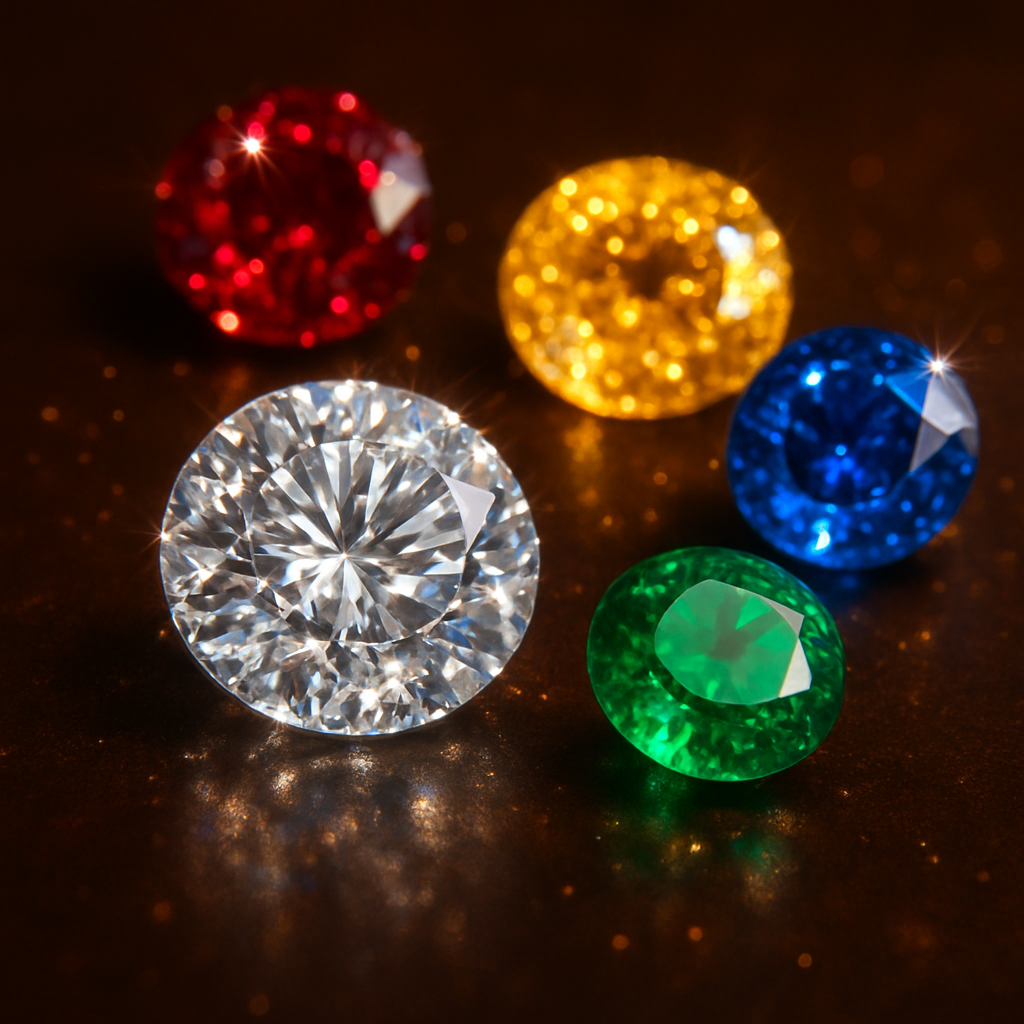
The Science of Sparkle: What Makes Gemstones Shine?
Share
There’s something timeless and mesmerizing about the way a gemstone catches the light. Whether it’s a brilliant diamond, glittering moissanite, or a richly colored sapphire, the sparkle of a gemstone is captivating. But behind the beauty lies physics, optics, and craftsmanship. So, what exactly makes a gemstone sparkle?
Let koicoi drop some science for you!
1. It Starts With Light
When light enters a gemstone, it behaves in fascinating ways—it slows down, bends (refraction), bounces around (reflection), and sometimes splits into a rainbow of colors (dispersion). These interactions are what you and I know as sparkle
Different gemstones interact with light in different ways depending on their chemical composition, crystal structure, and the way they’ve been cut. These properties define three main optical effects: brilliance, fire, and scintillation.
2. Brilliance: White Light Returns
Brilliance refers to the amount of white light that’s reflected back from the inside of a gemstone to your eyes. A gem with high brilliance appears very bright and “alive.” This depends on the refractive index (RI) of the stone - a measure of how much it bends light.
Diamonds have a high refractive index (about 2.42), which means they bend and reflect a lot of light internally. That’s why they’re famous for their intense sparkle. In contrast, gems like quartz (RI around 1.54) reflect less light and therefore have less brilliance.
Moissanite, which we're big fans of here at koicoi, has a higher RI than diamonds at 2.65 to 2.69, due to its ability to disperse light.
The key to brilliance is internal reflection. A well-cut gemstone will be shaped in such a way that light entering the stone is reflected from the bottom facets back up through the top (called the table), instead of leaking out the sides. This internal "light trap" is critical to that signature sparkle.
3. Fire: The Rainbow Within
While brilliance refers to white light, fire is the term used for the colored flashes of light that some gems produce. This happens because light is made of many wavelengths (colors), and as it passes through a gemstone, each wavelength bends by a slightly different amount. This is called dispersion.
Diamonds, again, are well known for high dispersion (0.044), splitting white light into flashes of red, blue, yellow, and green. But some other gems, like demantoid garnet or zircon, also show intense fire, sometimes even more than diamonds.
The amount of fire depends on both the gemstone’s chemical properties and the precision of its cut. A poorly cut diamond can appear dull and lifeless, even with high dispersion.
4. Scintillation: Sparkle in Motion
Scintillation refers to the way a gemstone sparkles as either the stone or the viewer moves. This effect is caused by light reflecting off the facets—flat, polished surfaces cut into the stone.
When a gemstone is rotated or tilted, the angle of the facets causes some to catch light while others fall into shadow, creating a dynamic, twinkling appearance. The pattern and contrast of these light and dark areas are key to a gem’s visual appeal.
A well-designed cut maximizes scintillation by placing facets in strategic positions to reflect light in different directions, enhancing the "life" of the gem.
5. The Role of the Cut
Nature may create the raw material, but it's human craftsmanship that unlocks a gemstone’s full sparkle potential. The cut of a gemstone—its proportions, symmetry, and polish—greatly affects how light behaves inside the stone.
For example, the classic round brilliant diamond cut has 57 or 58 precisely angled facets specifically designed to maximize brilliance, fire, and scintillation. If a stone is cut too shallow or too deep, much of the light will escape instead of being reflected back to the viewer, dulling its appearance.
Even colored stones like sapphires and rubies require expert cutting to balance their natural color with optimal sparkle.
6. Clarity and Transparency
While less influential than cut or refractive index, a gemstone’s clarity—the absence of internal flaws (inclusions) or cloudiness—also impacts its sparkle. Inclusions can scatter or absorb light, disrupting internal reflection and reducing brilliance.
Highly transparent stones allow light to pass through cleanly, enhancing all the other optical effects. That’s why even a perfectly cut gemstone with low clarity may not sparkle as much as a clearer one.
Science in action
The sparkle of a gemstone is more than just a pretty effect—it's the result of a complex interaction between light, material science, and expert craftsmanship.
So the next time you admire a glittering ring or pendant, remember: you’re not just looking at a beautiful object—you’re witnessing the science of sparkle in action.